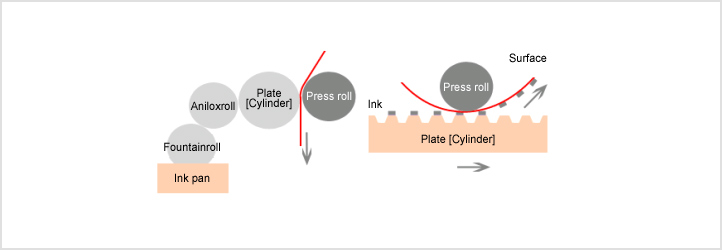- Offset Printing
- Gravure Printing
- Stencil / Silkscreen Printing
- Direct Imaging Printing
- Letterpress Flexo Printing
Printing by utilizing the physical and chemical repulsion between ink receptive(image) areas that repel water and water receptive(nonimage) areas that repel ink , water is not pure water but fountain solution mixed with alcohel.
Offset Printing Principle
unlike other printing methods, desired images are printed by differentiating inked and non-inked areas on a flat plate using water (usually absorption)
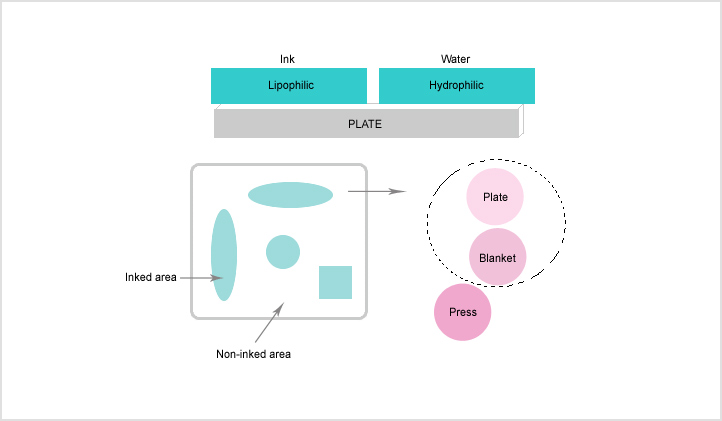
Derived from the word ‘engrave’, ink is poured into concave cells that are made on a metal surface by rusting or other method then transferred onto the surface. Originated in 1897 by Helio Graphy.
Gravure Printing Principle
Ink is poured into concave (engraved) cells then transferred directly onto the surface.
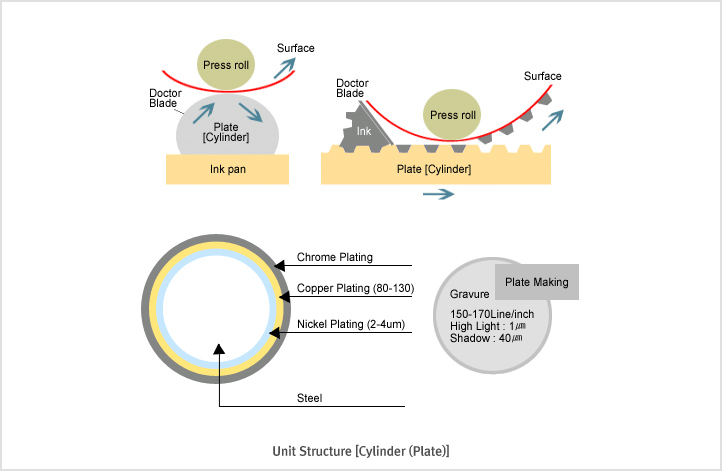
- Doctor Blade (Knife)
-
Used to scrape off any excess ink on the cylinder so that ink remains only in the cell.
The knife is typically about 70㎛ thick and is made of steel but may be coated with ceramic, PTFE, or other coating.
- Press Roll
-
Used to transfer ink from the cell by applying pressure onto the printing ink on the cylinder.
Pressure of 5-2Kg/cm. Need to consider the diameter of the rubber roll, lubricity of the surface, resistance to solvents and pressure.
| Description | Conve | Gravure(Net) | Hellio |
|---|---|---|---|
| Plate Making | Corrosion | Corrosion | Engraving |
| Cell Capacity | Large | Large | Small |
| Feature | Different levels of depth on the same plate | - | Equal depth throughout the entire plate |
Ink is transferred through netting thread that are imprinted in the form of typescript on the surface.
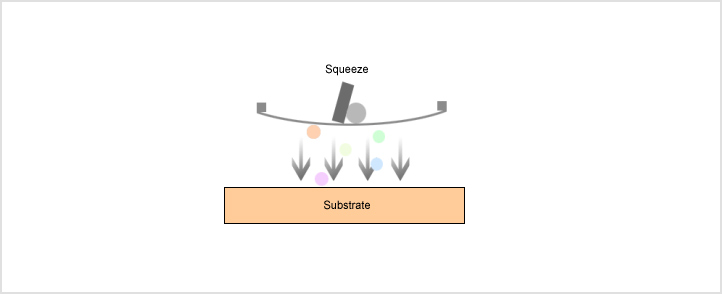
Ink is transmitted onto a plate using electric signals that distinguish the inked areas from the non-inked.
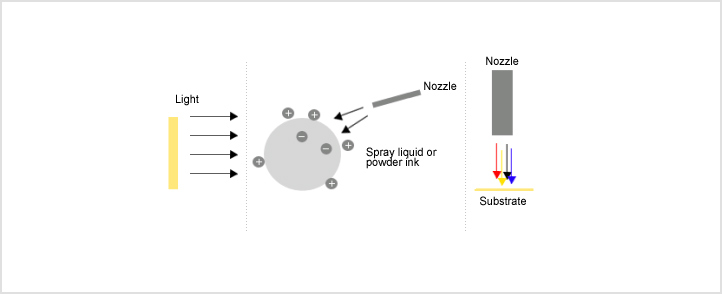
Ink is smeared onto convex engravings (embossing) then transferred directly onto the surface.
